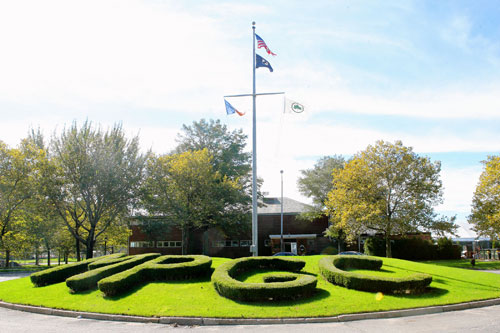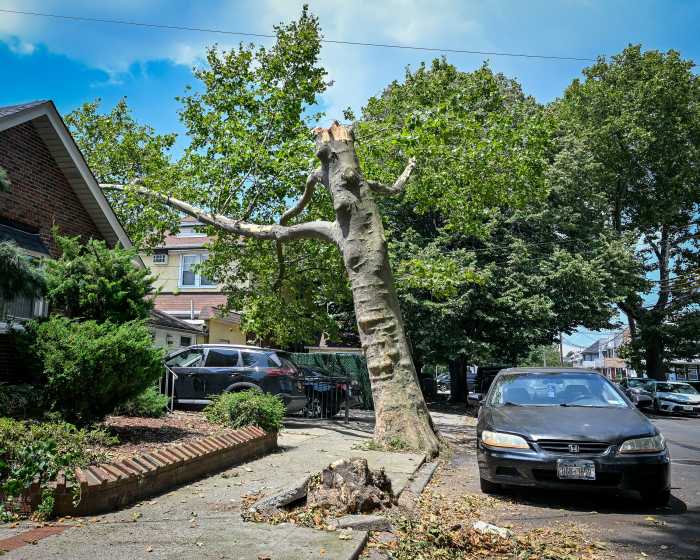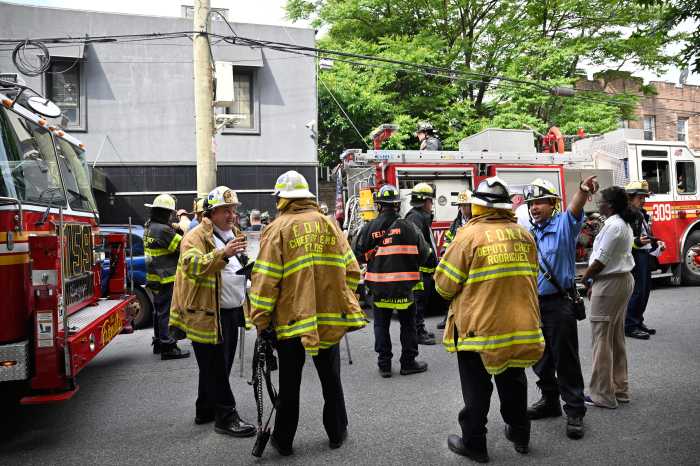It’s not easy being green.
In fact, it costs so much green to keep the greens of Marine Park Golf Course green that the operators are looking into some innovative solutions that sound surprisingly … well, green.
Golf courses aren’t generally viewed as paragons of environmental virtue, but Adam Giordano and his father Mike, who took over operation of the golf course five years ago, are hoping to install a water recapturing scheme that would use a drainage system to divert storm-water runoff from the city’s sewer system into a reservoir for later use in irrigation, saving thousands of dollars in water bills in the process.
“We’re attempting to make the park sustainable,” he said.
The father-son team has already started using more rugged, drought-resistant grasses, including the native Scottish species Aurora Gold, which can get along with much less water than the thirsty varieties used on most American golf courses.
Adam says that these water-saving measures are pragmatic choices, which happen to have environmentally friendly side effects.
“It’s not only green, it’s practical,” he said. “Without improving the economics, and reducing our dependence on grid energy and city water, the park is not going to continue to grow or even exist.”
Keeping 7,000 yards of links lush would be an expensive proposition under any circumstances, but the Giordanos face additional burdens at Marine Park Golf Course.
Most of the city’s public golf courses draw from on-site wells for irrigation, so their water is essentially free except for the cost of the electricity to run the pumps. But the vast Marine Park Golf Course — the largest public course in the city — currently gets its entire water supply from city pipes, paying by the gallon like any homeowner or business.
Maintaining a golf course can demand as much as 10 gallons of water per square foot annually. And with 10 gallons of metered water costing about 45 cents, watering links that stretch the length of 70 football fields across Marine Park can get expensive.
The previous operators dealt with the problem by just turning the sprinklers off — which turned the course’s greens into browns.
“We wanted to make the course more attractive, and so we started using a lot of water,” said Mike.
The results aren’t lost on visitors. During last month’s Brooklyn Open, hosted at the Marine Park Golf Course, Assemblyman Alan Maisel was amazed by the difference.
“A few years ago, it was a dump,” said Maisel.
City water rates have gone up nearly 11 percent a year since the Giordanos took over the course in 2008, making paying the city for the golf course’s life blood a boogie. Still, the cost of recycling rain water for use on the grounds is high, so the operators have applied for a “green infrastructure grant” to help, and rallied politicians such as Maisel and Borough President Markowitz to plead their case.
“They’ve been very helpful in lobbying for us, and making sure that parks and the city are all kind of behind this and that everyone is working together to solve this problem,” Adam said.
The Giordanos have also contracted surveyors to scout Marine Park for underground reservoirs of fresh water — at least, fresh enough for grass — in the hope of ending its reliance on the city water supply entirely.
If they do find usable groundwater beneath the park, drilling a well would be a hole in one.

























